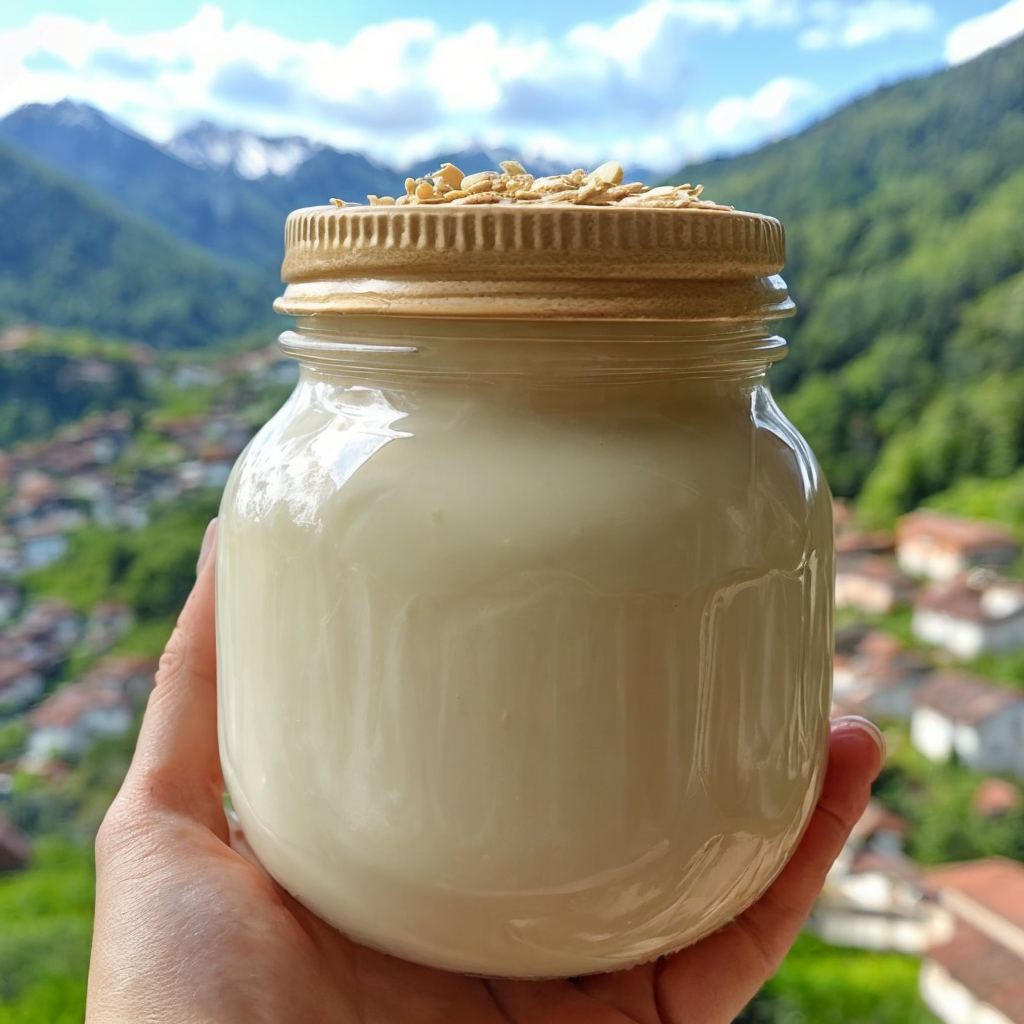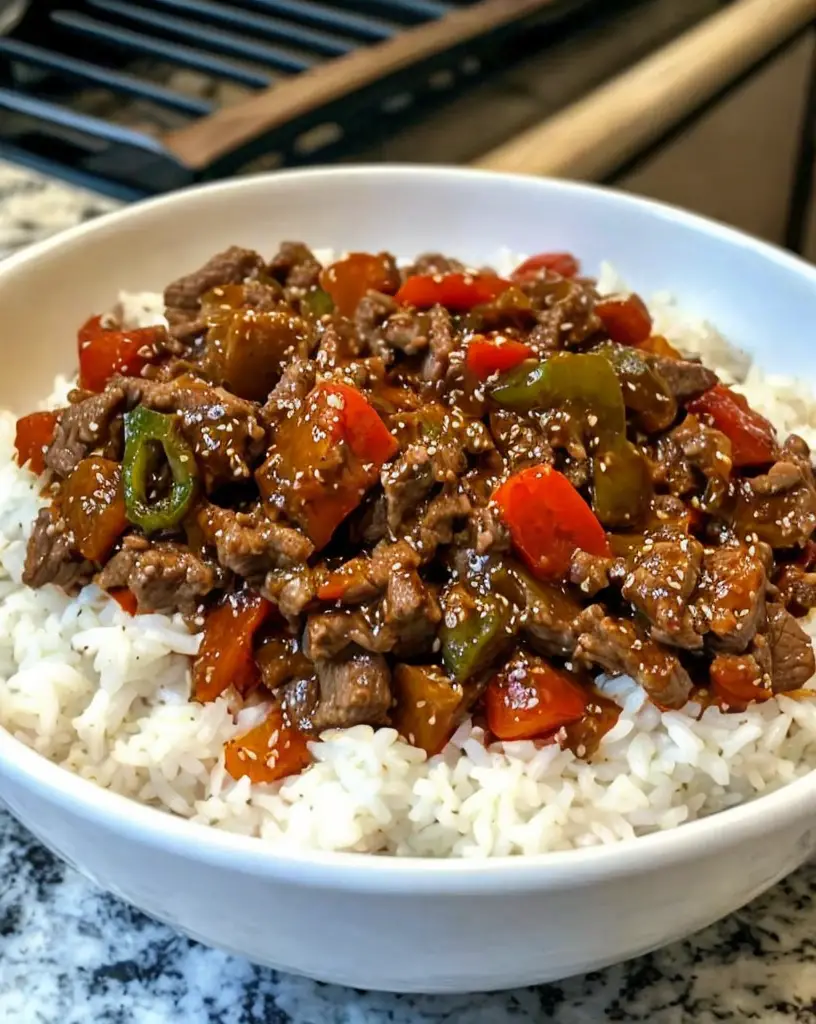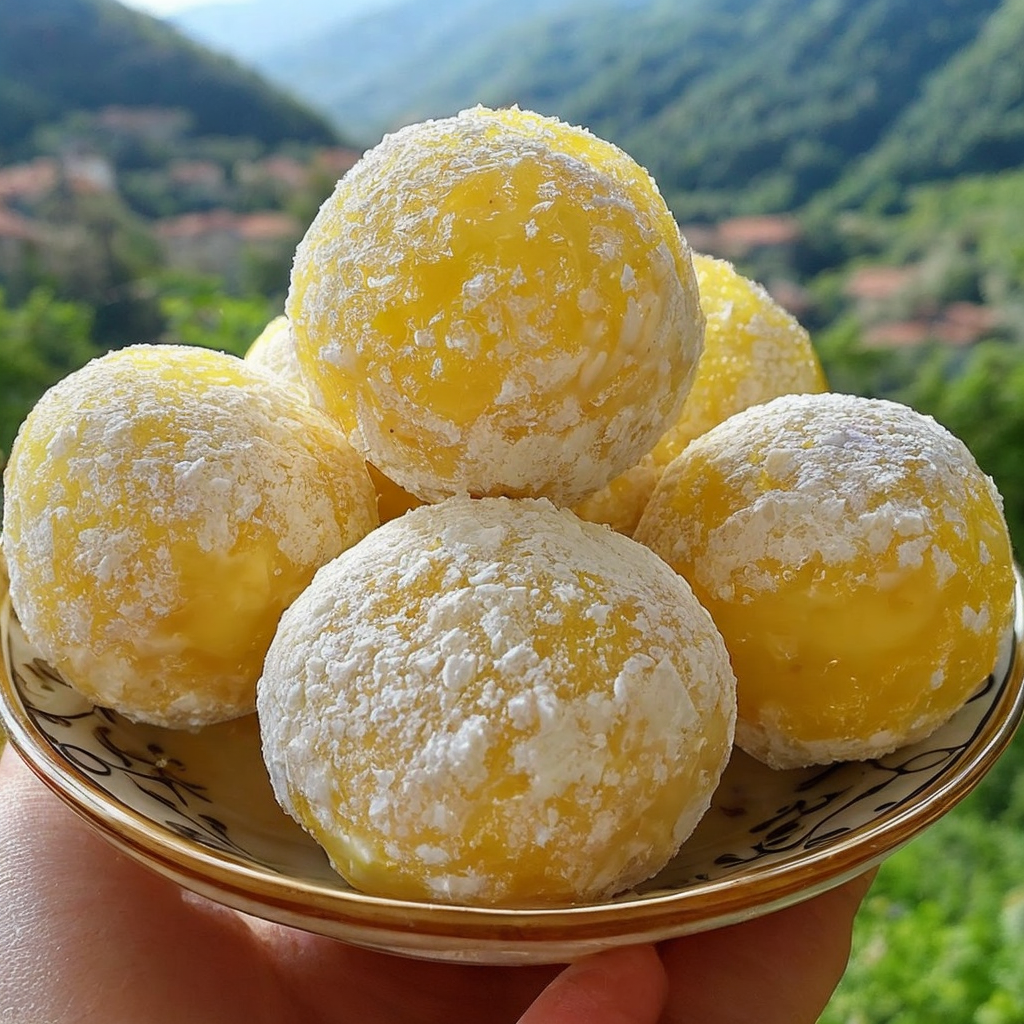Sweetened Condensed Oat Milk: A Creamy, Dairy-Free Delight
Sweetened condensed oat milk is a delicious, dairy-free alternative that will revolutionize your beverages and desserts. Imagine a creamy, sweet concoction that perfectly complements your morning coffee or serves as a lush ingredient in your favorite recipes. Oats provide a smooth texture and a mild flavor that balances beautifully with sugar and vanilla, creating a silky-sweet experience in every sip. Not only is it rich in flavor, but it also caters to those seeking plant-based options without sacrificing indulgence.
This recipe for sweetened condensed oat milk is incredibly easy to prepare, with minimal cooking involved, making it a perfect choice for busy individuals or families. The satisfaction of crafting your own condensed milk from scratch can elevate your culinary skills and make you feel a sense of achievement. With just a few ingredients, you can create something that’s not only tasty but also healthier than store-bought versions, often filled with preservatives or additives. You’ll love the versatility it offers in coffee, desserts, or even as a base for smoothies!
Quick Recipe Highlights
- Flavor Profile: Sweetened condensed oat milk features a lightly sweet, creamy flavor with comforting hints of vanilla.
- Texture: This homemade oat milk has a rich, velvety texture that blends smoothly in beverages and desserts.
- Aroma: The warm aroma of oats combined with the sweetness of sugar creates a delightful experience while cooking.
- Visual Appeal: The inviting golden hue adds a lovely touch to your drinks and dishes, making them look appetizing.
- Skill Level Needed: Perfect for both novice cooks and experienced chefs, this recipe requires no special skills.
- Special Equipment: All you need is a blender and a fine mesh strainer or cheesecloth to prepare this oat milk.
Recipe Overview
- Difficulty Level: This sweetened condensed oat milk is classified as easy, making it a great choice for at-home chefs of all levels.
- Category: This recipe belongs to the beverages category, specifically within plant-based milk alternatives.
- Cuisine: While this recipe sees influences from various cultural approaches to dairy alternatives, it’s primarily aligned with modern vegan cooking.
- Cost: Making sweetened condensed oat milk at home is cost-effective, with the main ingredients being oats, water, sugar, and vanilla.
- Season: Enjoy this recipe year-round, as it can enhance seasonal drinks, from warm winter beverages to refreshing summer smoothies.
- Occasion: Perfect for breakfast, coffee breaks, or as a sweet addition to desserts during gatherings and celebrations.
Why You’ll Love This Recipe
The sweetened condensed oat milk brings an incredible depth of flavor and a hint of sweetness that enhances a multitude of dishes. The creamy texture perfectly mimics traditional sweetened condensed milk, allowing you to enjoy all your favorite recipes without the dairy. Pour it into your coffee for a luxurious start to your day or drizzle it over pancakes and desserts for that sweet touch.
Convenience is another significant advantage of this recipe. Preparing sweetened condensed oat milk at home means you can make just what you need, avoiding waste. The straightforward steps involved in making it—blending and simmering for a short while—allow even those with limited kitchen time the ability to enjoy a delicious treat.
Nutritionally, oat milk is an excellent choice for those seeking dairy-free or vegan alternatives. Oats are rich in fiber and nutrients, providing health benefits such as improved digestion and cholesterol regulation. Plus, making it from scratch allows you to control the sweetness level, catering to your dietary preferences.
For social occasions, this sweetened condensed oat milk can become the star of your dessert table or elevate your coffee bar for gatherings. Share the joy of homemade goodness with friends and family, and inspire them to try new flavors in their drinks and desserts.
Lastly, this recipe is very economical. The primary ingredients—oats and water—are inexpensive and readily available, meaning you can create a delicious, dairy-free sweetened condensed milk without breaking the bank. With this recipe, you enjoy both taste and affordability.
Historical Background and Cultural Significance
Sweetened condensed milk has a storied history, with its origins dating back to the 19th century when it was developed as a means of preserving milk without refrigeration. In its traditional form, it served as a staple in many households, beloved for its long shelf life and sweetening ability. With the rise of plant-based diets and the demand for dairy alternatives, oat milk has gained popularity as a versatile substitute.
Culturally, oat milk was first embraced in Scandinavia where oats were a common grain. This healthy, whole-food option has since traveled around the globe, becoming a crucial ingredient in vegan cooking and baking. Various cultures have now adopted oat milk, celebrating its unique flavor and nutrition benefits that align with many dietary preferences.
As the vegan movement grew over the years, the demand for homemade alternatives allowed for the recreation of popular items such as sweetened condensed milk. This recipe reflects an evolution to accommodate diverse dietary needs while maintaining delicious flavors and textures. With the green food trend, using oats also represents a sustainable choice, highlighting the cultural shift towards more ethical eating practices.
Home cooks across different regions have modified the sweetened condensed oat milk recipe to include local flavors and ingredients, creating versions infused with spices or alternative sweeteners, enriching the diversity of this delight.
Ingredient Deep Dive
Oats: Oats have a rich history as one of the first cultivated grains, valued for their nutritional benefits. Packed with fiber, they can help lower cholesterol and stabilize blood sugar levels. When choosing oats for your homemade sweetened condensed oat milk, look for gluten-free certified oats if you’re avoiding gluten. Store them in a cool, dry place, and they can last a long time. For substitutions, any rolled oats or quick oats will work; avoid steel-cut oats as they won’t blend well.
Sugar: The sweetener in this recipe can be adjusted according to your preference. Sugar provides the essential sweetness and preserves the creamy consistency of the milk. Demerara or coconut sugar can offer different flavor notes, while honey or maple syrup can be used for those not strictly vegan. Store sugar in an airtight container to keep it fresh, and consider using less sweetener if you prefer a more natural flavor profile.
Vanilla Extract: Using pure vanilla extract enhances the overall flavor, adding a sweet and aromatic depth to your oat milk. Vanilla has a cultural association with warmth and comfort, often used in sweet dishes worldwide. To select high-quality vanilla, look for products that list “pure vanilla” without synthetic additives. Store your vanilla in a cool, dark place, and consider homemade vanilla extract for a personal touch.
Water: The base for all beverages, water plays a critical role in achieving the desired consistency for your oat milk. Always use filtered or purified water, particularly if you want to enhance the taste of your final product. Adjust the water-to-oat ratio based on how thick or thin you prefer your oat milk.
Common Mistakes to Avoid
- Using Steel-Cut Oats: Steel-cut oats do not blend well, leading to a gritty texture. Always opt for rolled or quick oats.
- Over-Blending: Over-blending can result in a slimy texture. Blend just until the mixture is smooth.
- Not Straining Properly: Failing to strain adequately can leave oat pulp in the milk, making it gritty. Use a fine mesh strainer or cheesecloth for best results.
- Rushing the Cooking Time: Skipping or reducing the simmering time may affect the sweetness and texture. Allow adequate time for flavors to develop.
- Not Sweetening to Taste: Adjust sweetness after blending; it’s easier to add than to subtract. Taste as you go!
- Ignoring Ingredient Quality: Using subpar ingredients, like old oats or artificial sweeteners, can impact flavor. Always choose fresh, high-quality ingredients.
- Improper Storage: Sweetened condensed oat milk should be stored in the refrigerator and consumed within a week. Always check for spoilage signs.
- Skimping on Vanilla: Vanilla enhances the overall flavor. Skipping this ingredient will lead to a less aromatic experience.
Essential Techniques
Blending: Blending is vital for achieving a smooth consistency in sweetened condensed oat milk. To master this technique, start on a low speed and gradually increase to high, ensuring even mixing. A common pitfall is over-blending, which can lead to a slimy texture. The visual cue for success is a creamy, homogenous mixture that resembles traditional milk.
Straining: Proper straining is essential to remove unwanted pulp and achieve a velvety smooth texture. To master this technique, use a fine mesh strainer or cheesecloth, and allow the liquid to drain fully. A common mistake is pressing too hard on the pulp, which can cause cloudiness in the milk. The ideal result should be a clear, creamy liquid.
Pro Tips for Perfect Sweetened Condensed Oat Milk
– Use cold water during blending for an extra refreshing taste.
– For a thicker milk, increase the amount of oats used in the recipe.
– Experiment with flavor add-ins like cinnamon or cocoa powder for a unique twist.
– Let the mixture cool before straining to enhance the blending process.
– Consider refrigerating the oats prior to blending; chilled oats can lead to a creamier texture.
– For an extra touch of sweetness, add a pinch of salt to round out the flavors.
– Ensure your appliances are clean to avoid unwanted flavors in your oat milk.
– Taste test during the process to customize sweetness and vanilla levels.
Variations and Adaptations
One delightful variation to sweetened condensed oat milk is the addition of flavored extracts, such as almond or hazelnut, which can infuse your oat milk with unique notes. Seasonal adaptations, like adding pumpkin spice in the fall or peppermint in winter, can provide a festive touch.
Dietary modifications can also be made; use maple syrup for a vegan-friendly sweetener or substitute coconut sugar for a healthier option. For flavor variations, you might consider adding a hint of spices like nutmeg or cardamom for a warm and comforting beverage.
Texture modifications can be achieved by blending the mixture longer for a silkier finish or incorporating a little cashew or almond butter for a richer mouthfeel. When it comes to presentation alternatives, serve your oat milk in various glassware to match the occasion or garnished with cinnamon sticks for added visual appeal.
Serving and Presentation Guide
For serving sweetened condensed oat milk, consider glassware that showcases its rich color. Warm beverages can be served in mugs, while chilled versions can be elegantly presented in tall glasses. Garnishing with fresh mint leaves or a sprinkle of cocoa powder can elevate its aesthetic appeal.
Traditional accompaniments can include pastries or pancakes for a leisurely brunch setting. For modern serving suggestions, consider integrating it into coffee cocktails or as a base for milkshakes. Serve at room temperature for desserts or chilled as a refreshing drink.
Portion control is essential, especially when used in desserts. Pour it generously into recipes, while keeping servings moderate to ensure indulgence without excess.
Wine and Beverage Pairing
For an exquisite pairing, consider serving sweetened condensed oat milk with dessert wines like late-harvest Riesling, whose sweetness complements the oat milk beautifully. Alternatively, a lush port can enhance the creamy texture and satisfy your sweet tooth.
Non-alcoholic alternatives such as herbal teas work harmoniously, especially those with vanilla or floral notes like chamomile. For coffee lovers, pairing your sweetened condensed oat milk with espresso creates a luxurious beverage experience.
When serving, consider temperature; chilled beverages enhance the refreshing qualities of oat milk, while warm options evoke a comforting sensation. Always serve them in complementary glassware that enhances the overall dining experience.
Storage and Shelf Life
To store your sweetened condensed oat milk, transfer it to an airtight container and refrigerate. It can typically last up to a week. Ensure you store it away from strong-smelling foods in your fridge, as oat milk can absorb odors.
Keep an eye out for signs of spoilage, such as sour smells or changes in texture. If you notice separation, simply give it a good shake before using. For reheating, warm on low heat on the stove or in a microwave, ensuring you don’t boil it. If you want to extend its shelf life, consider freezing oat milk in ice cube trays for quick future use.
Make Ahead Strategies
When planning to make sweetened condensed oat milk ahead of time, prepare the components a day before serving. Store the blended and strained milk in the fridge, so it’s ready for use whenever needed.
Consider also prepping the oats by soaking them for a couple of hours before blending for a smoother result. The mixture can be made a few days in advance; however, aim to use it fresh for optimal flavor and quality.
If you plan to serve sweetened condensed oat milk at an event, consider any fresh elements—such as whipped cream or spices—be added right before serving for the best presentation.
Scaling Instructions
For those looking to halve or double their batch of sweetened condensed oat milk, simply adjust the ingredient measurements accordingly. Remember, scaling the recipe doesn’t require translation into different cooking times, making it a straightforward adjustment.
If doubling, ensure your blender can handle the increased volume, and consider blending in batches if necessary. Factor in potential minor adjustments in sweetness and consistency that may be needed when increasing quantity.
When it comes to storage, doubling your recipe could mean a larger container, so plan accordingly. The key is ensuring each batch remains consistent in quality, regardless of the size.
Nutritional Deep Dive
Sweetened condensed oat milk is a healthier alternative to traditional dairy options, offering a macro breakdown that highlights its creamy, natural benefits. The oats used in this recipe provide an impressive amount of fiber, which is essential for digestive health, while sugar adds a boost of energy.
In terms of micronutrient analysis, this recipe can be enriched by adding vitamins through fortified plant-based milk or using whole oats. The health benefits of whole grains contribute to heart health and can help with weight management.
Portion analysis is important to maintain a balanced diet; consider controlling your use in recipes to enjoy the best taste while staying mindful of caloric intake.
Dietary Adaptations
Sweetened condensed oat milk can cater to various dietary needs. For those seeking gluten-free choices, ensure to use certified gluten-free oats in your recipe.
Vegans will appreciate this recipe as it naturally contains no animal products. For those on low-carb or keto diets, consider using erythritol or monk fruit sweetener instead of sugar. The recipe can also be adapted for paleo diets by using natural sweeteners and limiting additional ingredients.
For those with specific dietary restrictions, such as low-FODMAP, adjust the amount of oats to meet individual needs while trying to maintain balanced flavor and texture.
Troubleshooting Guide
If you encounter texture issues with your sweetened condensed oat milk, it may be due to over-blending or not straining properly. Make sure to blend just until smooth and strain thoroughly to avoid a gritty texture.
If the flavor balance feels off, consider adjusting the sweetness; a pinch of salt can also enhance the overall flavor. If you experience temperature problems, ensure you avoid boiling during reheating, as this can change the consistency.
For equipment challenges, make sure your blender is powerful enough to handle the oats, or consider soaking the oats prior to blending for a smoother finish. Lastly, timing concerns can arise; if you’re in a hurry, pre-measure ingredients ahead of time to streamline your preparation process.
Recipe Success Stories
Many community members have shared their success stories using this sweetened condensed oat milk recipe in various ways. Some have experimented with unique flavors like coconut or almond, receiving great feedback from family and friends.
Readers have adapted this recipe for various dietary preferences, showcasing its versatility—from gluten-free to sugar-free versions—all while maintaining great flavor and texture.
Those who have captured their experiences in photographs have expressed delight in how beautifully the oat milk complements desserts like cakes and pancakes, encouraging others to try it as well. The sense of joy and experimentation in the kitchen has made this recipe a favorite among many.
Frequently Asked Questions
Can I use instant oats for this recipe?
Yes, you can use instant oats, but they may create a slightly different texture than rolled oats. The flavor will still be delightful, but your sweetened condensed oat milk might be silkier.
How long does the oat milk last?
Homemade sweetened condensed oat milk typically lasts about a week when stored in the refrigerator. Be sure to check for spoilage signs before using.
Can I make this a sugar-free option?
Absolutely! You can substitute the sugar with alternatives like stevia, monk fruit sweetener, or erythritol for a sugar-free version.
What can I do with leftover oat pulp?
Leftover oat pulp can be utilized in smoothies, baking recipes (like oatmeal cookies), or even added to soups for extra thickness!
Is this recipe suitable for children?
Yes, sweetened condensed oat milk is suitable for children, especially those with dairy allergies or intolerances. Just adjust the sugar content to your child’s taste preferences.
Can I freeze oat milk?
While you can freeze oat milk, its consistency may change upon thawing. If you plan to use it for cooking or baking, freezing can be a great option!
Can I add flavors like chocolate or fruit?
Yes! Feel free to experiment by adding cocoa powder for chocolate-flavored oat milk or blending in fruits like strawberries or bananas for a unique twist.
How can I use sweetened condensed oat milk in recipes?
This oat milk can be used in any recipe traditionally requiring sweetened condensed milk, including desserts, beverages, and even savory dishes that benefit from a touch of sweetness.
Can I use job’s tears instead of oats?
While oats are standard for this recipe, job’s tears can be substituted for a unique and nutritious twist, but may require adjustments in liquid and cooking time.
Is this recipe vegan-friendly?
Yes! Sweetened condensed oat milk is entirely plant-based and suitable for vegans. Simply use plant-based sweeteners for the sugar.
Additional Resources
If you’re interested in exploring more plant-based recipes that include sweetened condensed oat milk, consider checking out our collection of desserts like vegan cakes or even drinks like lattes. Knowledge of various blending techniques can further enhance your cooking skills, making future recipes even more enjoyable.
For ingredient information, explore resources on oats and their health benefits, as well as how they fit into a balanced diet. Equipment recommendations can include high-speed blenders or strainers to ensure the best results when preparing any liquid recipes.
Join the Conversation
We encourage you to share your sweetened condensed oat milk creations on social media, using the hashtag #OatMilkDelight! Feel free to post your photography tips or different variations you’ve tried. We love hearing your stories, and your feedback can help inspire others to make this delicious recipe. Join our community engaged in healthy eating, and let’s continue to explore the wonders of cooking together!
The Recipe
Sweetened Condensed Oat Milk
Serves: 4
Prep Time: 10 mins
Cook Time: 20 mins
Total Time: 30 mins
Kitchen Equipment Needed
- High-speed blender
- Fine mesh strainer or cheesecloth
- Measuring cups
- Pot for simmering
Ingredients
- 1 cup rolled oats
- 3 cups water
- 1/2 cup sugar (or to taste)
- 1 tsp vanilla extract
Directions
- In a blender, combine the oats and water. Blend until smooth.
- Strain the blended mixture through a fine mesh strainer or cheesecloth into a pot, discarding the oat pulp.
- Place the pot on the stove over medium heat and add the sugar and vanilla extract.
- Stir frequently, allowing the mixture to simmer for about 20 minutes or until it thickens slightly.
- Remove from heat and let cool before transferring to an airtight container for storage.
Recipe Notes
- Adjust sweetness as desired; you can use less or more sugar based on personal preference.
- For a flavored version, consider adding spices such as cinnamon or cocoa powder during simmering.
- Store in the refrigerator and use within a week for best freshness.




